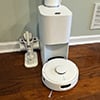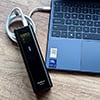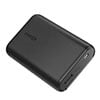While spam and scam calls are declining in the U.S., they are still a big problem. According to the 2024 Truecaller Insights report, 56.2 million Americans lost over $25.4 billion last year. The losses, according to the report, are tied to the fact that these scams are becoming more sophisticated and effective due to a more targeted approach. Fortunately, there are tools that can help block individual numbers and known scammers and divert unwanted callers.

To effectively block unwanted calls and prevent spam from reaching your voicemail, carrier-level solutions are your best bet. Carriers possess the technical ability to identify the sources of calls and offer services that can prevent spam and blocked calls from going to voicemail. Most carriers now include some form of blocking on their networks to filter out the most obvious spammers, thanks in part to the SHAKEN/STIR framework, which verifies that calls come from legitimate phone numbers.
Last year, the FCC mandated that cellular gateways, which provide access to U.S. networks for international callers, implement SHAKEN/STIR, further improving spam call prevention.
Despite these measures, spam calls still get through. But there are ways you can enhance spam-call blocking on your iPhone. There are apps that let you block not just real spam calls but also legitimate but annoying calls from political parties, marketers, pollsters, and charitable organizations. And, there are call screening features that help you decide whether to pick up the call or decline it.
I review your options below for blocking spammers and taking back your privacy.
1. Block calls on an iPhone using built-in features
Apple iPhone has built-in call blocking – in your Phone app, under Recents, tap the info icon next to a phone number or contact you want to block, scroll to the bottom of your screen, then tap Block this Caller. If you want to block a number that hasn't called you, go to Settings, then scroll to Phone. In the Calls section, go to Call Blocking & Identification – here, you will be able to add a number.
But this method isn't very useful. First, a spammer has to call you before you can block the number. And since spammers rarely use the same number, or use the "neighborhood spoofing" technique, where they call from what appears to be your area code and prefix to trick you into answering, this won't block the majority of spam calls we get.
The other features Apple offers iPhone users don't block calls – they send them to voicemail. However, they do help you avoid unwanted callers.
The one that's a no-brainer is Silence Junk Callers. As its name suggests, this feature silences calls identified by your carrier as potentially being fraud or spam. In the Settings app, go to Phone and then Call Blocking & Identification to turn it on.
You can also choose to silence unknown callers. This prevents calls from ringing if the caller isn't in your Contacts or you haven't called them recently. I don't have this feature turned on because I often receive calls from people I haven't put in my Contacts. However, this feature could be helpful if most of your callers are in your Contacts. To turn it on, open the Settings app and go to Phone, where you can turn on Silence Unknown Callers.
Another helpful feature is Business Call Identification. With this turned on, Apple and your carrier will verify caller information for businesses and let you know who's calling. I recommend turning both types of caller ID on. Go to Phone, Call Blocking & Identification, and Business Call Identification in the Settings app. You'll see toggles for Apple and your carrier.
What you really want to know, though, is whether you should pick up an incoming call. With iOS 17, you can screen your calls by sending incoming calls to Live Voicemail. With Live Voicemail, you can see a real-time transcription of the message the caller is leaving you. So, if a number you don't recognize ends up being an important call, you can pick it up. This has become one of my favorite features. It's let me pick up calls from the doctor's office looking to reschedule when I would have ordinarily just let it go to voicemail.
Read more: 3 Ways to Make Private Phone Calls
2. Use an iPhone spam-blocking app
Countless apps in the App Store claim to be call blockers. But you have to be careful about which you install – you're giving them full access to your phone, texts, contacts, and more. You want to find a well-known developer with a large community of users reporting calls to the suspected spam list. I strongly recommend going with one of the top-rated brand name choices, such as Hiya or Truecaller. While both these apps will block calls, neither can stop those calls from going to voicemail.
Personally, I prefer Hiya. It has an extensive community-driven blacklist and, critically, allows you to block neighborhood spoofing calls (area code and prefix blocking) and even provides caller ID features that you would usually have to pay for with your carrier. You can download the free version if you just want the call blocking. The subscription version ($3.99 per month or $24.99 per year) gets you the caller ID, name lookups, and more frequent spam updates.
Truecaller also has a massive user community, and its free version offers spam call blocking and caller ID. With the Truecaller Premium ($9.99 per month), you can send calls to Truecaller Assistant, which will ask the caller questions to detect if it's a spam call. You can see the answers in real-time and decide whether to pick up the call or hang up.
Once you pick a call-blocking app, you will need to give the app permission to block calls on your iPhone. Open Settings and go to Phone. Tap Call Blocking & Identification. Under Allow These Apps To Block Calls And Provide Caller ID, turn the app on.
Read more: Why Am I Getting Other People's Texts on My iPhone?
3. Use Carrier-level spam blocking
Call blocking on AT&T
AT&T customers can use AT&T's ActiveArmor app to block known spam calls entirely, preventing them from reaching voicemail. The app also allows you to block specific numbers you specify. However, it doesn't offer protection against local number spoofing.
AT&T offers a premium service, ActiveArmor Advanced, for $3.99 per month. While it doesn't add extra call-blocking features, it includes reverse number lookup, Caller ID, and security features like identity monitoring and theft alerts.
Call blocking on T-Mobile
T-Mobile’s free Scam ID service is automatically activated for all customers, notifying you of potential spam calls and providing area code spoofing protection by blocking suspected calls before they reach your phone. Prepaid customers can enable Scam ID by dialing #662# and activate Caller ID by dialing #436#. Postpaid customers can download the Scam Shield app.
For $4 per month, Scam Shield Premium allows you to send categories of calls to voicemail, manage your block list, and use reverse phone number lookup.
Call blocking on Verizon
Verizon’s Call Filter identifies likely spam callers and lets you automatically block them, preventing them from leaving a voicemail.
For $2.99 per month per line (or $7.99 for 3+ lines), Call Filter Plus lets you block calls based on categories and risk levels (High Risk, Medium Risk, or All Risk Levels) and provides a Spam lookup tool for reverse number lookup.
Updated on 6/10/2024 with new information about carriers, apps, and iOS 17.
[Image credit: Techlicious]
For the past 20+ years, Techlicious founder Suzanne Kantra has been exploring and writing about the world’s most exciting and important science and technology issues. Prior to Techlicious, Suzanne was the Technology Editor for Martha Stewart Living Omnimedia and the Senior Technology Editor for Popular Science. Suzanne has been featured on CNN, CBS, and NBC.














From Del on March 10, 2020 :: 5:26 pm
I will be using the app “WideProtect Spam Call Blocker”
It allows you to block spammers using phone number prefixes.
• Forget about unwanted calls, SMS and MMS, and spammers spoofing tricks.
• No subscriptions, no in-app purchases, pay once and use for any ranges you need!
• Now the app supports blocking up to 50,000,000 phone numbers - whole 5 area codes in the USA!
https://apps.apple.com/us/app/wideprotect-spam-call-blocker/id1171024059
Reply